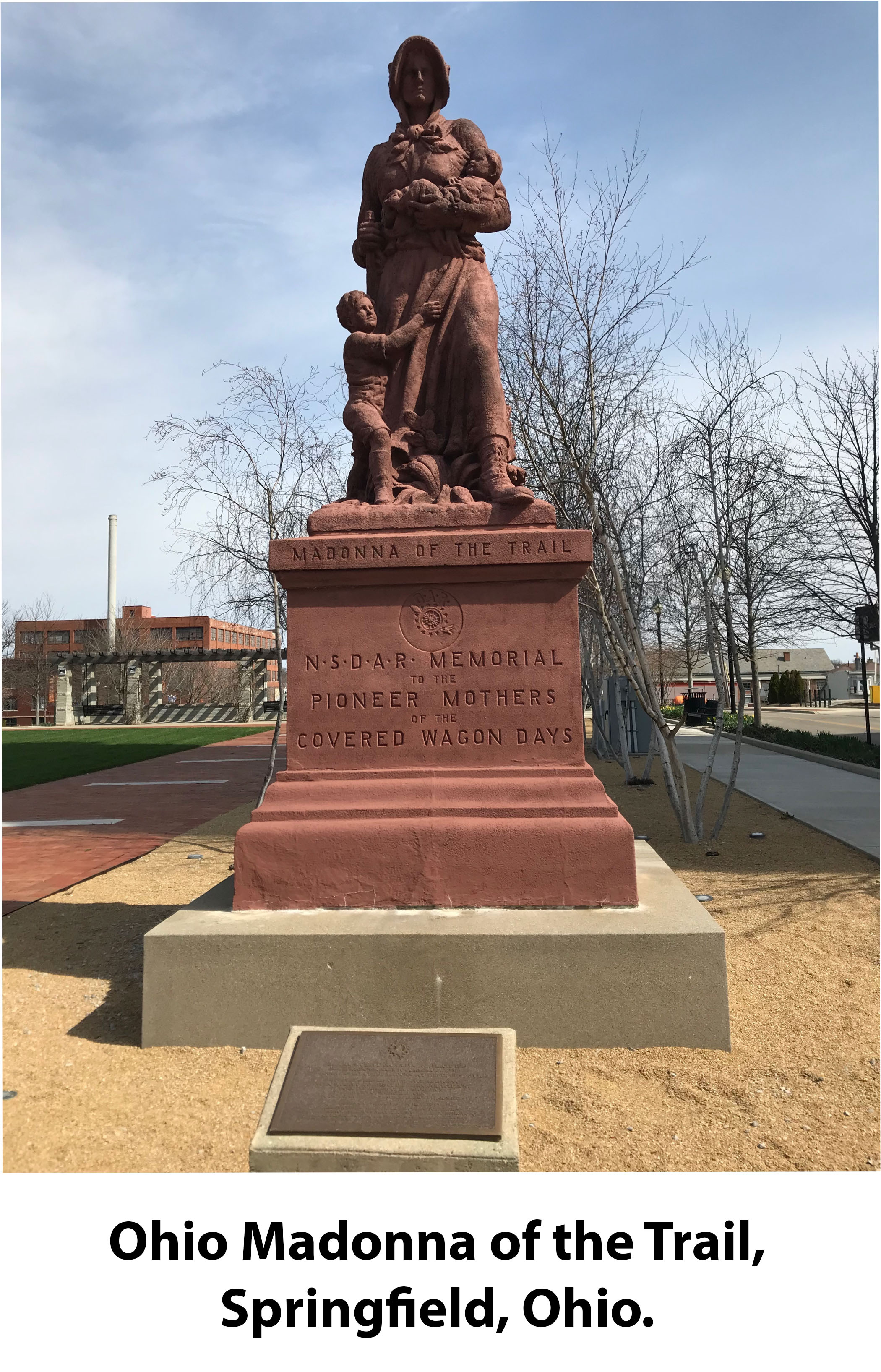Madonna of the Trail

The idea of marking a highway was begun in Missouri about 1909 by a group of women who formed a committee to locate the Old Santa Fe Trail in Missouri. This committee was influential in securing an appropriation from the State of Missouri to mark the trail with suitable boulders or monuments.
This idea further developed into plans for a highway to be designated as the National Old Trails Road, by an Act of Congress, and the work of marking was carried on in conjunction with the National Old Trails Road Association.
In 1911, the National Society Daughters of the American Revolution (DAR) established a national committee known as the National Old Trails Road Committee whose work was, primarily, to establish the Old Trails Road as a great National Memorial Highway.
In 1912, the National Old Trails Road Association was established with the objective being to assist the Daughters of the American Revolution in marking Old Trails and to promote the construction of an Ocean-to-Ocean Highway of modern type worthy of its memorial character." The Association, under the presidency of Harry S. Truman, guaranteed the expense of the erection of the monuments.
In 1924, the plan was changed from a proposed small cast iron marker on the Trails to that of erecting 12 large markers. In 1927, the Daughters of the American Revolution Continental Congress accepted the design--The Madonna of the Trail.
The Madonna of the Trail is a pioneer woman clasping her baby with her young son clinging to her skirts. The face of the mother, strong in character, beauty, and gentleness, is the face of a mother who realizes her responsibilities and trusts in God. It has a feeling of solidarity--a monument which will stand through the ages.
The figure of the mother is of heroic proportions ten feet high with a weight of five tons. The base upon which the figure stands is six feet high and weighs 12 tons. This, in turn, rests upon a foundation that is placed on the ground, standing two feet above the level which makes the monument 18 feet above the ground.
The figure and the base are made of algonite stone (a poured mass) of which the Missouri granite is used as the main aggregate, thus giving the monument a warm, pink shade which is the color of the Missouri native granite. It was thought and expected that this stone had admirable aging qualities and, with time, would improve in color and solidarity.
On the two sides of the base are to be found words of historical data or local commemoration. These inscriptions are of the Revolutionary War period or the early history in respective localities. Among the inscriptions on the Indiana statue is an inscription indicating the nearby site of Indiana's first tollgate on the National Road (US 40).
These monuments were erected in each of the 12 states through which the National Old Trails Road passes. The design of the monument was that of the sculptor August Leimbach of St. Louis and was offered by Mrs. John Trigg Moss, chairman of the DAR national committee.
At Bethesda, Maryland, during the week of April 19, 1929, the twelfth of the monuments erected by state societies of the Daughters of the American Revolution was dedicated to mark the Ocean-to-Ocean Highway in honor of the pioneer mothers of covered wagon days.
Locations and Dedication Dates
- OHIO, Springfield......4 July 1928
- WEST VIRGINIA, Wheeling......7 July 1928
- KANSAS, Council Grove.....7 September 1928
- MISSOURI, Lexington.....17 September 1928
- COLORADO, Lamar.....24 September 1928
- NEW MEXICO, Albuquerque.....27 September 1928
- ARIZONA, Springerville.....29 September 1928
- IILLINOIS, Vandalia.....26 October 1928
- INDIANA, Richmond.....28 October 1928
- PENNSYLVANIA, Washington County.....8 December 1928
- CALIFORNIA, Upland.....1 February 1929
- MARYLAND, Bethesda.....week of 19 April 1929

